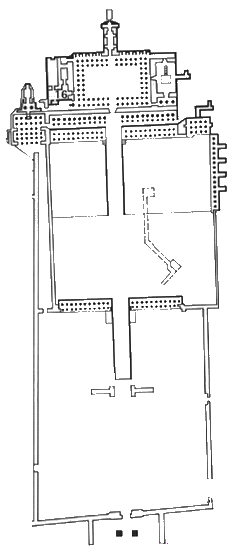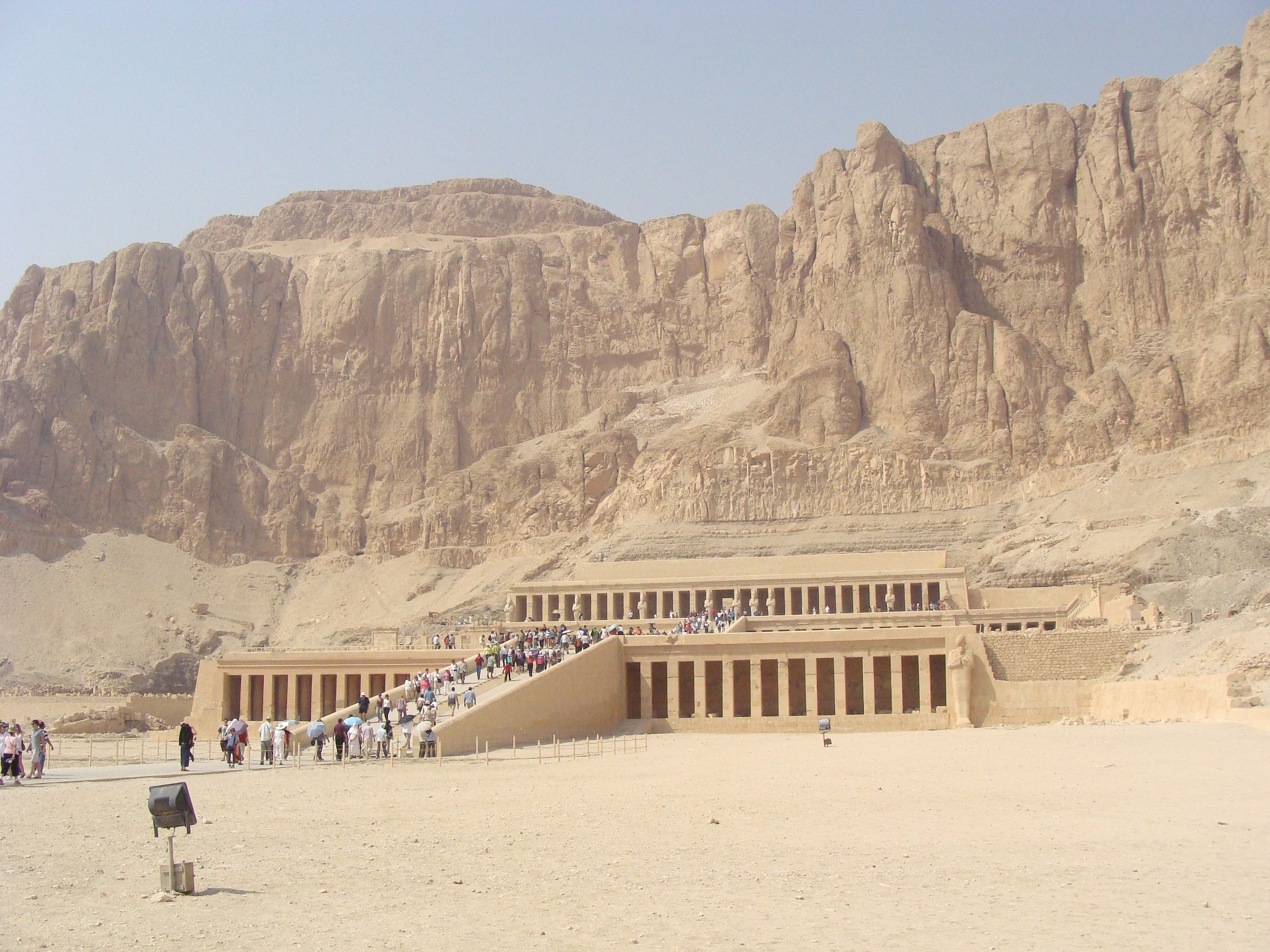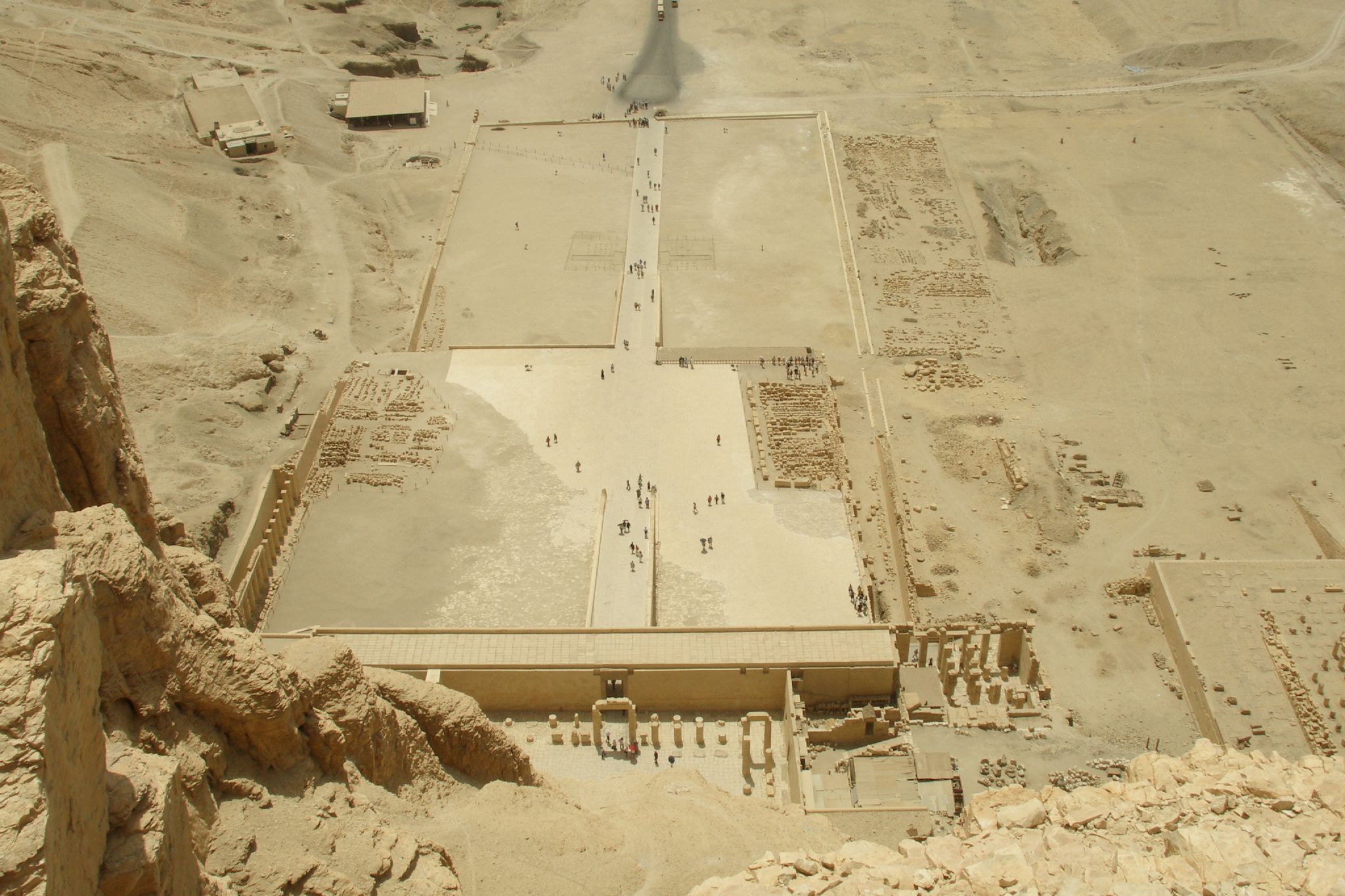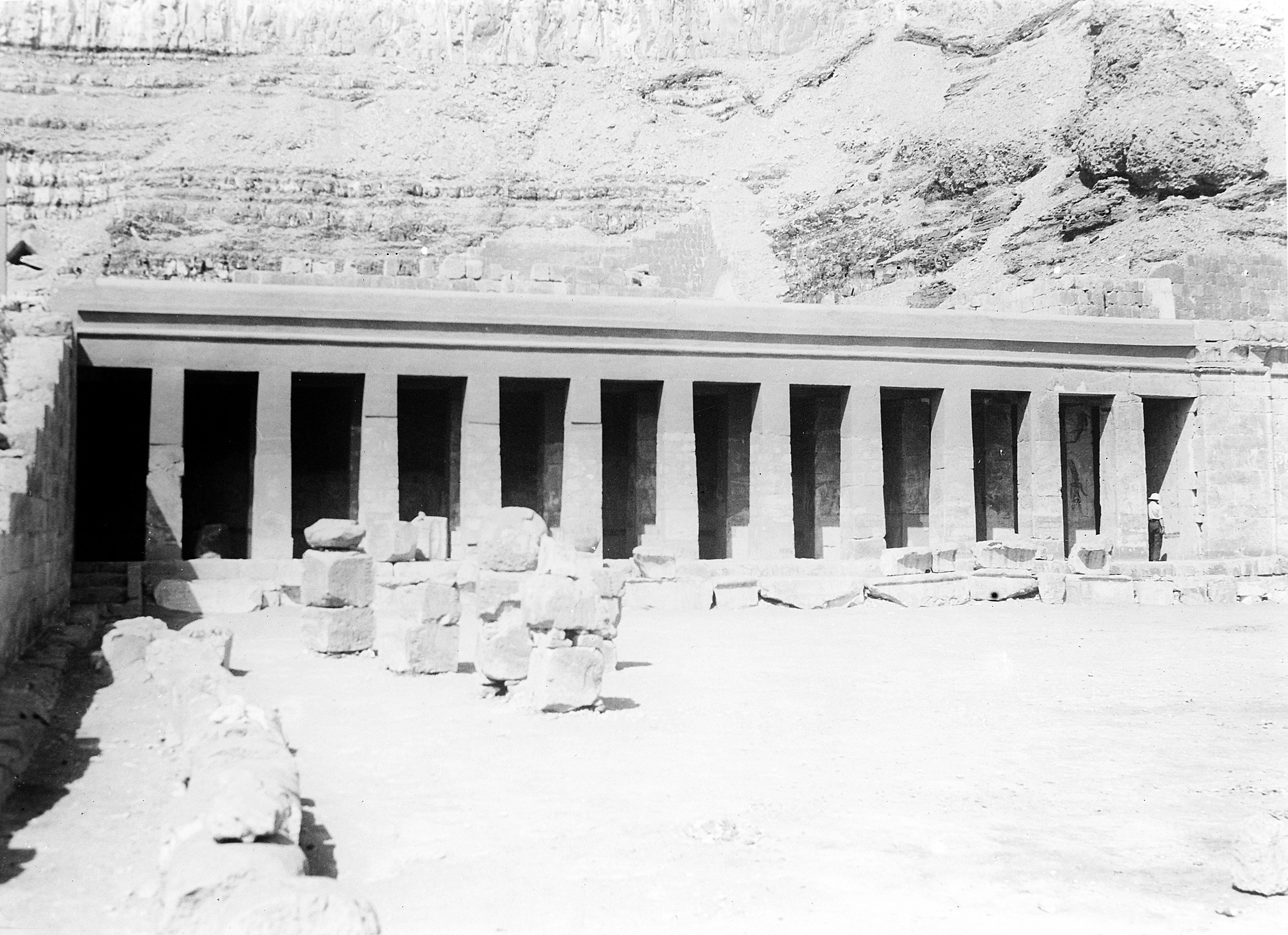Mortuary Temple of Queen Hatshepsut, SENMUT, Egyptian, DEIR-EL-BAHARI, Egypt, 1480 BC

Plan of Mortuary temple of Queen Hatshepsut
There are a number of unique qualities regarding Mortuary Temple of Queen Hatshepsut (image 1). She is the most well-known female queen studied throughout Egyptian history which flourished during her long successful reign. Her life was well documented, including her working relationship with architect Senmut. It’s fascinating to consider more than three thousand years ago how those details are available to understand her life, design intent and discussions with the architect to achieve her building goals.

Image 1: Front view of Mortuary Temple of Queen Hatshepsut
The temple is located in Deir el Bahari on the west side of the Nile River. There are other projects adjacent to Hatshepsut’s temple (image 2). The temple is located in the Valley of the Kings, a sequence of monuments linked for miles in relation to the Nile River. Hatshepsut’s building and landscape project starts to blend into the natural landscape. It is built of the same material as the natural mountainous UPPER EGYPT landscape where it is located. It is a delicate blend of Temple of Khons and Temple of Ramesses II projects. Mortuary Temple of Queen Hatshepsut is a blending of the two projects, both ADDITIVE and SUBTRACTIVE.

Image 2: Located in the Valley of Kings
The project is defined by a central ramp (image 3) leading gently into the cliffside through a series of terraces. The ramp starts at what seems to be the natural landscape transitioning into the built architecture. The first raised terrace is wide with no side walls and open to the sky. The second terrace begins to be more defined as a platform separated from the ground level. Both terraces are defined with a STOA along their edge. Contemporary scholars have been developing research on historical Egyptian landscape architecture. Tomb paintings discovered show myrrh and frankincense trees depicted on these terraces. Archeologists are uncovering evidence confirming traces of these vegetative matter. It is projected the terraces may have been filled with groves of trees, further blending the built and constructed environment.

Image 3: Aerial view of Mortuary Temple of Queen Hatshepsut showing centralized ramp
Beyond the terraces, one passes the natural façade of the cliff face, and space is now carved from the mountainside. The ramp leads next to a HYPOSTYLE HALL, a large hall full of columns. Moving beyond the hypostyle hall, the central AXIS of the ramp continues to the SANCTUARY, the smallest space in plan and height. There is a dramatic change in spatial scale reinforcing TELESCOPING and the HIERARCHY of sanctuary. All the preceding spaces are reinforcing SYMMETRY. The experience from ground level is gentle and deliberate. In contrast to Temple of Khons and Temple of Ramesses II, there is no large frontal plane defining a monumental scale. Mortuary Temple of Queen Hatshepsut is still monumental, but in a delicate relationship so as not to overwhelming the natural landscape.
Another way in which the subtle blending occurs is through the stoas lining the edge of the terraces separating interior and exterior zones (image 4). The stoa is an interstitial zone defining an edge. One side of the columns is open to the exterior sky and elements. The other side of the columns is interior space with a roof above. The stoa doesn’t feel completely interior as it is open to the elements along the side, but it feels semi enclosed. The stoa is an interesting interstitial space strategically used at Mortuary Temple of Queen Hatshepsut to further blend natural and constructed elements, architecture and landscape.

Image 4: Stoa lined terrace helping to blend the edge of the Mortuary Temple to the mountainside
Media Attributions
- Plan Drawing of the Temple of Queen Hathshepsut
- Image of the Mortuary Temple © Lucas
- Image of people going into the Mortuary Temple of Queen Hatshepsut. © Norman Walsh
- Birds Eye view of the Mortuary Temple of Queen Hatshepsut © Vyacheslav Argenberg
- Collonade of the Mortuary Temple of Queen Hatheshetsut © Wellcome Images is licensed under a CC BY (Attribution) license
located in southern Egypt today, Upper Egypt is known for a mountainous geography and head waters of the Nile River
an addition of materials or parts to create the whole
A reduction or deletion of mass or parts. The difference between dematerialization and subtractive is that dematerialization is specifically a reduction in structure.
columns in a line, separating interior and exterior zones
a hall created by a datum of columns, with or without roof
The most hierarchical area of the Egyptian temple, usually smaller in scale. Could be location of altar or religious ceremony, but most likely a space for only the holiest of people to enter.
Space changing in width and/or height, either decreasing or increasing volume of space. Telescoping can occur in either plan with wall placement or section by either floor and/or ceiling position.
a space that is more important than another in project; could be because of scale, function, location or for other reasons
an equal or like reflection about an axis (linear, radial, etc.)
